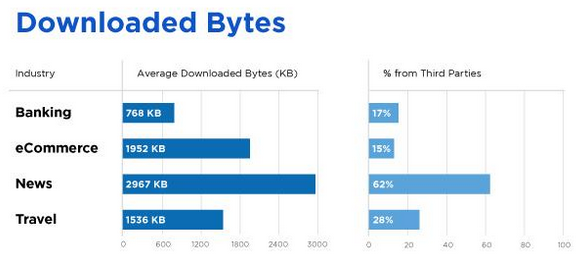Save 50% on a 3-month Digiday+ membership. Ends Dec 5.

Publishers are more at home tweaking headlines and ledes than the backend performance of their webpages. But the rise of mobile is forcing them to shuffle their priorities.
As mobile continues to overtake desktop reading for publishers, publishers have hustled both to design and to optimize their pages for mobile screens. The problem is that they’re not very good at it, at least if you believe Facebook. Core to the Instant Articles pitch is the idea that Facebook can load publisher content far faster than publishers can on their own sites. “These stories take an average of eight seconds to load, by far the slowest single content type on Facebook,” the company said of articles users share through its platform. Facebook, in contrast, says it can load articles in a tenth of the time — or in .8 of a second.
Facebook is not an uninterested bystander. Facebook’s entire business strategy is built around attracting users and holding onto them for as long as possible in an effort to show them more ads. So it has a vested interest in pooh-poohing publishers’ engineering prowess while simultaneously trumping up its own. More, Facebook has designed its mobile app so that even content from third-party publishers appears within it, giving it the final say on how publishers sites perform.
But despite Facebook’s inherent bias, observers say that the company has a point.
“The Web in general is getting slower, but the slowest group is the publishing space,” said Craig Hyde, CEO of Rigor, which helps publishers optimize their desktop and mobile sites. “With all the things on pages, it’s amazing things happen even in eight seconds.”
Indeed, look at a major site like CNN or Forbes, and you’ll see pages packed with ad tags, social media buttons and a long list of other third-party elements. Catchpoint, which monitors website performance, said that the big news sites run an average of 27.8 different third-party tags on their pages, weighing down their sites.
“For publishers the central question is, ‘Can I change my site so it loads faster and has less bloat but also gets me the ad revenue I need?’” said Drit Suljoti, Catchpoint’s chief product officer. “It’s a big challenge.”
Ad position: web_incontent_pos1
But the stakes for slow performance are considerably higher with mobile, where readers bounce more quickly and where there’s much lower tolerance for long loading times. Bounce rates, which Google defines as the percentage of single page-view visits to a website, are about 10-20 percent higher on mobile than on desktop, according to a 2014 study from RocketFuel. The trend makes sense considering that much of mobile traffic comes from social networks, where loyalty and attention spans are low. And responsive design often slows things down even further.
Publishers know that they’re behind the ball. Earlier this month, Vox Media, well known for its design and product chops, declared “performance bankruptcy” for its sites, where performance lags behind competitors The New York Times, Mashable and The Huffington Post. To fix that, Vox created a “Performance Team” dedicated to shaving its page-loading times and making a variety of other tweaks to improve the overall performance of its properties. Vox Media front-end engineering director Dan Chilton said that turning things around involves a combination of optimizations both big and small, such as compressing images for mobile and lazy-loading page elements so that they only appear when users scroll to them.
“We’re trying to find that balance between getting the content to readers quickly while still adding in those features and interactions that readers today come to expect,” he said.
All of this underscores Facebook’s mobile edge over publishers, which have comparatively less control over the various elements needed to run and monetize their sites. While publishers rely on third-party ad networks, analytics and tech, Facebook has developed it all in-house, giving it a competitive advantage over its new partners. But publishers say that the upside of Facebook’s performance push is that it will get publishers to think more seriously about how they improve their own.
Ad position: web_incontent_pos2
“I’m encouraged by their pitch, in the respect that it motivates the ecosystem to take performance very seriously,” said Nicholas Macias, product design lead at IGN Entertainment, which has prioritized mobile performance since late last year. “Facebook’s pressure is going to raise all boats.”
Photo: Flickr/Tracy Gill
More in Media

What publishers are wishing for this holiday season: End AI scraping and determine AI-powered audience value
Publishers want a fair, structured, regulated AI environment and they also want to define what the next decade of audience metrics looks like.

Digiday+ Research Subscription Index 2025: Subscription strategies from Bloomberg, The New York Times, Vox and others
Digiday’s third annual Subscription Index examines and measures publishers’ subscription strategies to identify common approaches and key tactics among Bloomberg, The New York Times, Vox and others.

From lawsuits to lobbying: How publishers are fighting AI
We may be closing out 2025, but publishers aren’t retreating from the battle of AI search — some are escalating it, and they expect the fight to stretch deep into 2026.
Ad position: web_bfu
